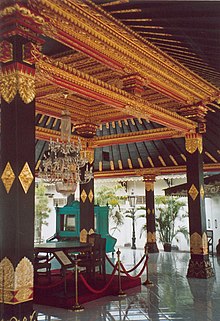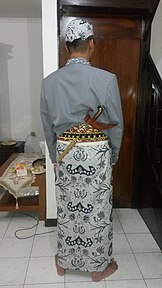Kamis, 14 Maret 2024
Kamis, 20 Juli 2023
Selasa, 23 Mei 2023
Senin, 27 Maret 2023
Kamis, 23 Maret 2023
Jumat, 29 Juli 2016
Javanese Culture
Javanese culture
The Yogyakarta sultanate palace's main pavilion.
The migration of Javanese people westward has created the coastal Javanese culture that distinct to inland Sundanese culture in West Java. Being the largest ethnic group, the Javanese culture and people influence Indonesian politics and culture, a process sometimes described as Javanization.
Literature
The five Pandawa brothers from the Hindu epic Mahabharata, narrated in the Javanese Wayang kulit.
Main articles: Javanese literature and Javanese poetry
Javanese literature tradition is among the earliest and the oldest surviving literature tradition in Indonesia. The translations of Hindu epic Ramayana and Mahabharata into old Javanese language took place during the era of Medang Kingdom and Kediri kingdom around 9th to 11th century. The Smaradhana is also composed during Kediri kingdom, and it became the prelude of later Panji cycles that spread as far as Siam and Cambodia. Other literary works include, Ken Arok and Ken Dedes, based upon Pararaton, the story of the orphan who usurped his king, and married the queen of the ancient Javanese kingdom.During the reign of Majapahit several notable works was produced. Nagarakretagama describes Majapahit during its height. Tantu Pagelaran dated from Majapahit period explained the mythical origin of the island and its volcanic nature. Kakawin Sutasoma, written by Mpu Tantular during the reign of the Majapahit. It is the source of the motto of Indonesia, Bhinneka Tunggal Ika, which is usually translated as Unity in Diversity, although literally it means '(Although) in pieces, yet One'. The kakawin teaches religious tolerance, specifically between the Hindu and Buddhist religions.
Other works includes Babad Tanah Jawi is a literature which relates to the spread of Islam in Java and Babad Dipanagara which tells the story of Prince Diponegoro.
Spirituality
| Part of a series on |
| Religion of Java |
|---|
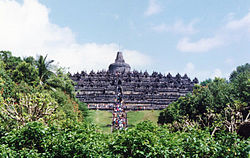 |
|
Java[show]
|
|
Early religiosity[show]
|
|
Hinduism[show]
|
|
Buddhism[show]
|
|
Islam[show]
|
|
Kebatinan[show]
|
|
Christianity[show]
|
Religion
Majapahit empire
Historically, Javanese follow a syncretic form of Hinduism, Buddhism and Kebatinan. The Majapahit empire religious tolerance in their society can be summed as Bhinnêka tunggal ika tan hana dharma mangrwa or They are indeed different, but they are of the same kind, as there is no duality in Truth.Starting from the 15th century, Islam and Christianity came to Java and slowly spread. Due to internal and external conflicts, Majapahit collapsed in the 16th century. Islam spread quickly under the new Islamic monarchs. While the spread of Christianity was supervised by colonial powers.
All the new religions were not taken literally but instead interpreted by the Javanese according to the Javanese traditional values, creating a new set of religious beliefs unique to local culture.
Islam
The introduction of orthodox Islam to the island by the new Muslim monarchs was not always peaceful however, Javanese, nobles and peasants who rejected the new rulers were either conquered or fled to neighboring Bali where they contributed heavily to the Balinese Hindu religion and culture. Some Hindus who remained in Java retreated themself to more remote area such as Tenger near the Mount Bromo to avoid proselytizion. During the islamization of Java, Sunan Kalijaga was one of the Walisanga which was active in promoting a more moderate form of Islam in Java, he was later appointed as advisor in the new Mataram Sultanate.Today, most Javanese follow a moderate form of Islam as their religion, while only 5-10 percent of Javanese follow orthodox Islamic traditions. Orthodox Muslims are the strongest in northern coast bordering the Java Sea, where Islam was first brought to the island. Islam first came in contact with Java during Majapahit periods, when they traded or made tributary relations with various states like Perlak and Samudra Pasai in modern-day Aceh.
Christianity
A minority of Javanese also follow Christianity (Protestantism and Catholicism), which are rather concentrated in Central Java (particularly Surakarta, Magelang and Yogyakarta for Catholicism).Hindu-Buddhist
Another minority are Buddhists and Hindus, they are mostly found in East Java, The Javanese Tengger tribe is still practicing Javanese-Hindu till today.Kebatinan
Main article: Kebatinan
Kebatinan are principles embodying a search for the inner self
but at the core is the concept of the peace of mind, connection with
the universe, and with an Almighty God. Although Kebatinan is not
strictly a religious affiliation, it addresses ethical and spiritual
values as inspired by Javanese tradition. It is not a religion in usual
sense of the word, like Islam, Judaism, or Christianity. There are no scriptures such as the Bible or the Qur'an, nor are there prophets. During the Soeharto era, this minority is acknowledged and protected as "penganut kepercayaan".Ceremonies
Many traditional Javanese customs or festivals such as meditation, slametan, naloni mitoni, patangpuluhdinanan, nyatus, nyewu have their roots in the kebatinan belief. Javanese of other beliefs modify them accordingly, incorporating Muslims, Christian or Hindu prayers instead. Details of the ceremonies differ from one community to the other.Grebeg Maulud
Grebeg Maulud at Surakarta
Javanese wedding
There are several variations of Javanese wedding, depending on the custom and social standing of the couple. Popular variation includes Surakartan, Jogjakarta, Paes Kesatrian, and Paes Ageng. The wedding rituals will include Siraman, Midodareni, Peningsetan, Ijab (for Muslims) or wedding sacrament (for Christians).Siraman
The bride and groom to be are showered at their respective homes, by families and close friends. Prayers are also given hoping for a good tide.Midodareni
A night before a Javanese wedding, the bride-to-be has her last dinner with her family, female friends are also invited. Traditional cuisine and prayers are given. Later, the groom's family will also come, bringing Peningsets (offerings to the bride family to seal the tomorrows wedding) in which the bride-to-be is hidden in her room. Only the female relatives of the groom can visit the bride-to-be.Naloni Mitoni
Held for the first pregnancy of a woman, when the pregnancy is in its seventh month. Family and close friends are invited. The mother-to-be are shrouded with seven layers of batik, symbolising hope for a good child and delivery. Prayers and traditional food are also served.Selapanan
Held when a child is 35 days, a ritual celebrating the new life. Family members and close friends will come to the event. The child's hair and nails are shaved. prayers, religious readings and a slametan is a common part of the event. After the event, cakes, sweets and eggs (symbolising the new life) will be shared.Tedhak Sithen
Held when a child is around eight months old. Family members are invited, to celebrate a child starts walking.Khitan
For a boy, khitan, or circumcision, is an important transition toward adulthood. The ritual usually held when the boy is 6 to 12 years old. Following the circumcision it is customary to sacrifice a goat, hold a slametan and wayang kulit (shadow puppet) performance. Circumcision is one factor that differentiate the Javanese with related Balinese and Tenggerese, which still predominantly Hindu.Ruwatan Gembel
The day Hindu children of the Dieng community shave their hair. A large offering ceremony to the Gods at the temples are given. Afterwards the community arranges a festival. Tourists normally flock to see the event.Slametan
Prayers to hope for good tidings. Normally tumpeng is served.Patangpuluhdinanan, Nyatus, Nyewu
Prayers given on the 40th, 100th, and 1000th days since a person deceased.Nyekar
Before the month of Ramadhan, family members visit the graves of their loved ones, praying for their well being.Labuan
A kejawen ceremony, where kebatinan believers throws a shroud to the sea or mountain, to throw away bad luck.Social Structure
Javanese priyayi and servants, c. 1865.
But today the Geertz opinion is often opposed because he mixed the social groups with belief groups. It was also difficult to apply this social categorisation in classing outsiders, for example other non-indigenous Indonesians such as persons of Arab, Chinese and Indian descent.
Social stratification is much less rigid in northern coast area, which is much more egalitarian.
Sultans
The Keratons, the royal palaces of the Yogyakarta Sultanate and the Surakarta Sunanate, are the central of the Javanese culture and social events. Although they are not ruling monarchs, they are still highly revered and look upon in the society. When addressing to the Sultan, a person is expected to speak in the refined "kromo inggil", but today formal bahasa Indonesia is also accepted.Not all Javanese were once subject of the Yogyakarta Sultanate and the Surakarta Sunanate.
Priyayi
The Priyayis were once part of the ruling aristocrats, they have little function today. Some of Indonesia's ruling political figures are descendants of the priyayis. They are now part of the general society and work in numerous fields.Villages
Villages are an important administrative unit in Java. It is divided into two types: Desa with elective leadership, usually in rural areas, and Kelurahan, where the leadership is appointed by Indonesian government, usually in urban areas. Village administration is managed by officers, still called with their traditional Javanese names. These are lurah (village chief), assisted by offices of carik (village secretary), kamituwa (officer for social affairs), jagabaya (officer for security), and modin (office for Islamic affairs and rituals, derived from Arabic Imam ad-Din, or leader of the faith).These officers traditionally didn't get paid in cash, but allotted a portion in the village's public land to be farmed, called tanah bengkok. In modern-day Indonesia, Village chief is elected directly by universal suffrage of the villagers, who are 17 years old and above, or already married.As literacy rate was low before independence, it is customary for the rival candidates to use common items as their campaign symbol, such as fruits, vegetables or traditional foods. The village chief election is usually non-partisan.
Family
Culturally, Javanese people adopt a bilateral kinship system, with male and female descendants having equal importance. As such there is no preference on having a male heir like paternalistic cultures in India or China. It is not customary for Javanese to have a surname. Women have a high degree of autonomy and are respected in Javanese culture.In a traditional marriage, it is the groom's family who chooses the bride from a selection of prospects. Prior to the wedding, the groom's family will give the bride's family a dowry. Afterwards, the bride's family is responsible for paying for the wedding. The groom's family can help financially, but they are not obliged to do so. Traditionally, divorce is not acceptable, but it was acceptable for the husband to take a second wife or a mistress. Young Javanese normally do not follow these customs, and today most Javanese women will resist infidelity and opt for a divorce. Divorce is becoming acceptable in Java.
Language
Main article: Javanese language
Javanese is a member of the Austronesian family of languages and is closely related to, but distinct from, other languages of Indonesia. It is notable for its great number of nearly ubiquitous Sanskrit loans, found especially in literary Javanese. This is due to the long history of Hindu and Buddhist influences in Java.Most Javanese in Indonesia are bilingual fluent in Indonesian and Javanese. In a public poll held circa-1990, approximately 12% of Javanese used Indonesian, around 18% used both Javanese and Indonesian, and the rest used Javanese exclusively.
The Javanese language was commonly written with a script descended from the Brahmi script, natively known as Hanacaraka or Carakan. Upon Indonesian independence it was replaced with a form of the Latin alphabet.
While Javanese was not made an official language of Indonesia, it has the status of 'regional language' for communication in the Javanese-majority regions. The language also can be viewed as an 'ethnic language' because it is one of the defining characteristics of the Javanese ethnic identity.
Occupations
Farming
Traditionally, most Javanese are farmers. This was especially common because of the fertile volcanic soil in Java. The most important agricultural commodity is rice. In 1997, it was estimated that Java produced 55% of Indonesian output of the crop. Most farmers work small-scale rice field, with around 42% of farmers cultivate less than 0.5 hectare of rice field. In region where soil is less fertile of where rainy season is short, other staple crops is cultivated, such as cassava.Blacksmith
A decorative kris with a figure of Semar as the handle. The bilah has thirteen luk.
Keris is an important item, with many heirloom kris made by master blacksmiths holding significant historical value. The design of the keris, with its snake like blade, is to torn apart an opponents abdomen, making the injury more severe. While the Javanese canting, enables them to make intricate Batik.
Kota Gede is famous for its silverworks and silver handicrafts.
Batik Making
Batik is traditionally done as a past time activity for women. But some town and villages have specialized in making Batik, such as Pekalongan, Kauman, Kampung Taman and Laweyan.Wood carving
Javanese woodworkers making traditional masks during the Dutch East Indies era.
Calendar
The Javanese calendar is used by Javanese people concurrently with two other calendars, the Gregorian calendar and the Islamic calendar. Gregorian calendar is the official calendar of Indonesia while the Islamic calendar is used by Muslims and Indonesian government for religious worship and deciding relevant Islamic holidays. Javanese calendar presently used mostly for cultural events (such as Satu Sura). The present Javanese calendar system is a lunar calendar adopted by Sultan Agung in 1633, based on the Islamic calendar. Previously, Javanese people used a solar system based on the Hindu calendar.Unlike many other calendars, the Javanese calendar uses a 5-day week known as the Pasaran cycle. This is still in use today and superimposed with 7-day week of the Gregorian calendar and Islamic calendar to become what is known as the 35-day Wetonan cycle.
Art
Javanese origin artforms are among the best known in Indonesia and the whole archipelago. The famous Javanese wayang puppetry culture was influenced by Hindu and Buddhist traditions. The Wayang repertoire stories, lakon, are mostly based on epics from India; Ramayana and Mahabharata. These epics and stories influenced wayang puppetry as well as Javanese classical dances. The influences from Islam and the Western world also can be found. The art of batik, and kris dagger are of Javanese origin.Music
Main article: Music of Java
Gamelan musical ensembles are found in both Java and Bali. All of these artforms holds important position, and function within Javanese culture and tradition.Architecture
Traditional Javanese house.
Candi Plaosan in Prambanan (9th century).
Main article: Architecture of Indonesia
Throughout their long history, the Javanese have produced many important buildings, ranging from Hindu monuments, Buddhist stupa, mortuary temples, palace complexes, and mosques.The paragon of religious monuments are Hindu temple of Prambanan and Buddhist temple of Borobudur. Both of them 9th centuries temples which are UNESCO World Heritage Site. Both are located near city of Yogyakarta in the slope of Mount Merapi.
Meanwhile, example of secular building can be seen in ruins of former capital city of Majapahit Kingdom (14th to 16th century AD) in Trowulan, East Java. The complex covers an area of 11 km x 9 km. It consists of various brick building, ranging from 20 to 40 meter-wide canal, purification pools, temples and iconic split gates. The capital complex is currently being considered as a candidate for becoming a UNESCO World Heritage Site.
Traditional Javanese building can be identified by its trapezoid shaped roof supported by wooden pillars. Another common feature in Javanese building is pendopo, a pavilion with open-side and four large pillars. The pillars and other part of the buildings can be richly carved. This architecture style can be found at kraton or palace of the Sultanates of Yogyakarta (palaces of Hamengkubuwono and Pakualaman) and Surakarta (palaces of Pakubuwono and Mangkunegaran).
Traditional mosques in Java maintain a distinctive Javanese style. The pendopo model is used as main feature of the mosque as its prayer hall. A trapezoidal roof is used instead of the more typically Muslim dome. These roofs are often multi-tiered and tiled.In addition to not using domes, traditional Javanese mosques also often lack minarets. The split gate from earlier Hindu-Buddhist period is still used in many mosques and public buildings in Java.
Some notable examples of mosques using traditional Javanese architecture include Agung Demak Mosque, Menara Kudus Mosque and the Grand Mosque of Banten. The Kudus Mosque is also of note because it incorporates Hindu-style stone architecture.
Names
Main article: Javanese names
Javanese do not usually have family names or surnames. Many have just a single name. For example, Sukarno or Suharto. Javanese names may come from traditional Javanese languages, many of which are derived from Sanskrit. Names with the prefix Su-,which means good, are very popular. After the advent of Islam, many Javanese began to use Arabic
names, especially coast populations, where Islamic influences are
stronger. Commoners usually only have one-word names, while nobilities
use two-or-more-word names, but rarely a surname. Due to the influence
of other cultures, many people started using names from other languages,
mainly European languages. Christian Javanese usually use Latin baptism names followed by a traditional Javanese name.Some people use a patronymic. For example, Abdurrahman Wahid's name is derived from his father's name (Wahid Hasyim) who was an independence fighter and minister. In turn, Wahid Hasyim's name was derived from that of his father: Hasyim Asyari, a famous cleric and founder of the Nahdlatul Ulama organisation.
Cuisine
Main article: Javanese cuisine
Nasi tumpeng, the quintessentially Javanese rice dish, symbolises the volcano.
Javanese cuisine is varied by regions. Eastern Javanese cuisine has preference for more salty and hot foods, while the Central Javanese prefer sweeter foods.
Famous food in Javanese cuisine is for example Rujak Cingur,a marinated cow lips and noses, served with vegetable, shrimp prawn and peanut sauce with chili. Rojak Cingur is considered traditional food of Surabaya in East Java.
Gudeg is a traditional food from Yogyakarta and Central Java which is made from young Nangka (jack fruit) boiled for several hours with palm sugar, and coconut milk.
Pecel, a type of peanut sauce with chili is a common ingredient in Javanese cuisine. It is used in various type of Rujak and Gado-gado. It can also be used as stand alone sauce with rice and prawn, egg and vegetables as Nasi Pecel (Pecel rice).
Tumpeng, is a rice served in the shape of a conical volcano, usually with rice colored yellow using turmeric. It is an important part of ceremony in Java. Tumpeng served in landmark events such as birthday, moving house, or other ceremonies.Traditionally, Tumpeng is served alongside fried chicken, boiled egg, vegetables, goat meat on a round plate made from bamboo called besek.
A notable food in Java is tempe, a meat substitute made from soy bean fermented with mold. It is a staple source of protein in Java and popular in the world as an excellent meat substitute for vegetarians.
By : Bambang Djokdja
Jumat, 17 Juni 2016
9 Tempat Yang Wajib Di Kunjungi Di Sleman.
Sleman merupakan sebuah kabupaten yang ada di Daerah Istimewa Yogyakarta. Ibukota dari kabupaten ini adalah Sleman. Sleman juga dikenal sebagai asal buah salak pondoh yang terkenal. Sebenarnya, berbagai perguruan tinggi yang ada di daerah Yogyakarta secara administratif terletak di wilayah kabupaten ini, di antaranya adalah Universitas Gadjah Mada dan Universitas Negeri Yogyakarta.
9 Tempat Yang Wajib Dikunjungi di Sleman .
Di sebelah utara kabupaten ini, Anda akan melihat puncak Gunung Merapi di perbatasan provinsi Jawa Tengah yaitu salah satu gunung berapi aktif yang paling berbahaya di Pulau Jawa. Sementara di bagian selatan merupakan dataran rendah yang subur. Aapun diantaranya sungai-sungai besar yang melintasi kabupaten Sleman ini adalah Kali Progo yang membatasi kabupaten Sleman dengan Kabupaten Kulon Progo, kali Code, kali Kuning, kali Opak dan Kali Tapus. Nah, apa saja tempat wisata menarik yang patut untuk Anda kunjungi. Berikut beberapa pilihan tempat wisata di Sleman.
1. SMA Negeri 2 Sleman
Sekolah favorit di kalangan anak muda .Lokasi di jantung kota Sleman,dan telah mencetak Alumni-Alumni terbaik Dari tahun 1991 sampai dengan saat ini ...
2. Candi Prambanan
 |
| Candi Prambanan |
Selain merupakan candi Hindu terbesar di indonesia, candi ini juga termasuk Situs Warisan Dunia UNESCO dan salah satu candi paling indah di kawasan Asia Tenggara. Tentunya sebagai salah satu candi termegah di Asia Tenggara membuat Candi Prambanan banyak dikunjungi wisatawan dari seluruh dunia.
Baca juga: 10 Daftar Tempat Wisata di Jawa Tengah dan Sekitarnya
3. Candi Ratu Boko
 |
| Pintu Masuk Candi Ratu Boko |
Secara administratif, situs ini terletak di wilayah 2 Dukuh yaitu Dukuh Dawung, Desa Bokoharjo dan Dukuh Sumberwatu, Desa Sambireja, Kec. Prambanan, Kabupaten Sleman, Yogyakarta.
4.Kaliurang
Kaliurang yang memiliki arti "Sungai Udang" adalah sebuah tempat wisata yang ada di Yogyakarta, tepatnya di Kabupaten Sleman dan di perbatasan dengan Jawa Tengah.
Kaliurang berada di daerah dataran tinggi yang memiliki banyak resor atau tempat peristirahatan karena udaranya yang sejuk. Disini juga terdapat banyak vila-vila penginapan. Tlaga putri adalah salah satu tempat wisata di sleman yang sering dikunjungi oleh wisatawan baik wisatawan lokal maupun luar negeri.
Baca juga: 7 Tempat Wisata di Jogja yang Terkenal dan Populer
5.Monumen Yogya Kembali
 |
| Monumen Yogya Kembali |
Museum Monumen dibangun dengan berbentuk kerucut yang terdiri dari tiga lantai dan dilengkapi pula dengan ruang perpustakaan serta ruang serbaguna.
Baca juga: 5 Tempat Wisata di Klaten yang Paling Menarik
6.Museum Dapur Tradisional
Museum Dapur Tradisional Sleman ini adalah sebuah museum yang memamerkan semua jenis peralatan memasak tradisional tempo dulu. Museum ini berada di desa wisata Kembangarum, Turi, Sleman, Yogyakarta. Peralatan dapur yang dipamerkan seperti parut, irik, tambir dan alat dapur tradisional lainnya yang berbahan bambu.
7. Museum Gunung Merapi
Museum Gunung Merapi adalah museum bersejarah yang terletak di Yogyakarta tepatnya di Jl. Boyong, Dsn Banteng, Desa Harjobinangun, Kec. Pakem, Kabupaten Sleman, Yogyakarta sekitar 5 KM dari kawasan objek wisata Kaliurang.
Museum Gunung api ini bertujuan untuk memberikan pengetahuan dan pemahaman tentang aspek ilmiah, ataupun sosial-budaya dan lain-lain yang ada kaitannya dengan gunung api dan sumber geologi lainnya.
Baca juga: 10 Tempat Wisata di Semarang yang Paling Terkenal
8. Candi Gebang
 |
| Candi Gebang |
Candi ini berukuran kurang lebih 5,25 × 5,25 meter dengan memiliki tinggi 8 meter. Candi Gebang menghadap ke timur dan puncaknya berbentuk lingga.
Baca juga: 10 Tempat Wisata di Kulon Progo Paling Menarik
9. Candi Ijo
 |
| Candi Ijo |
Candi Ijo berlokasi di Dukuh Groyokan, Desa Sambirejo, Kec. Prambanan, Kabupaten Sleman, Yogyakarta. Candi ini berada di lereng barat perbukitan Batur Agung yakni sekitar 4 KM arah tenggara Candi Ratu Boko. Candi ini dinamakan "Ijo" karena letaknya yang berada di atas bukit yang disebut dengan Gumuk Ijo.
Rekomendasi Wisata Di Pontianak
.
Tempat Wisata di Pontianak | Featured: Tugu Khatulistiwa - by bambang_djokdja
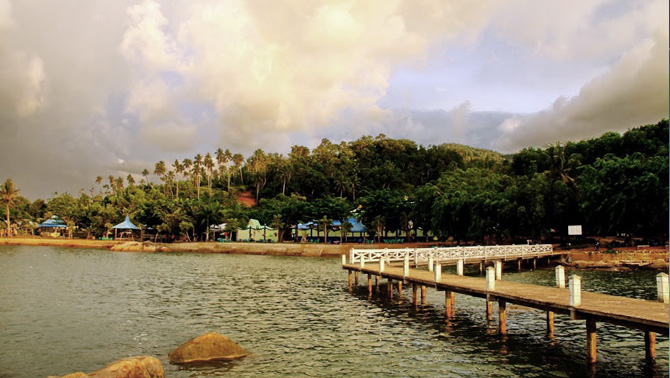
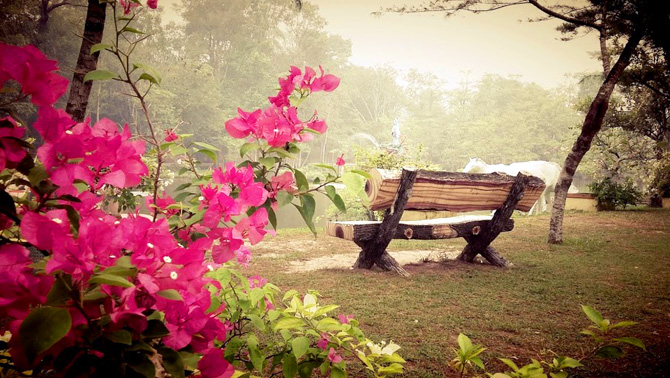
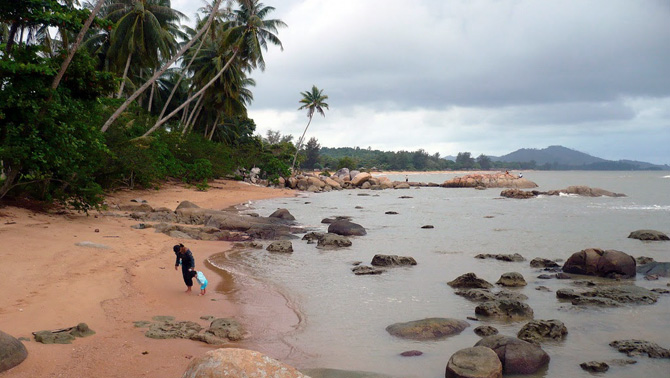
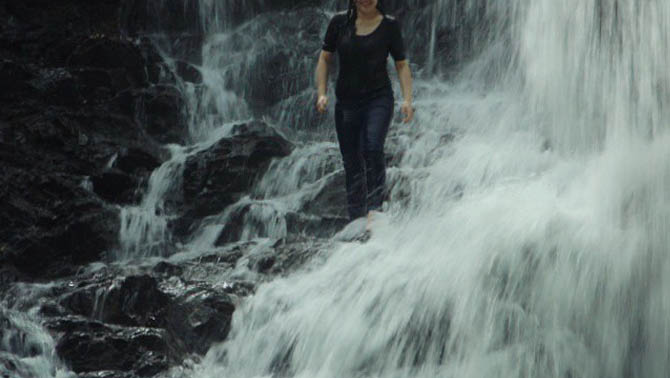
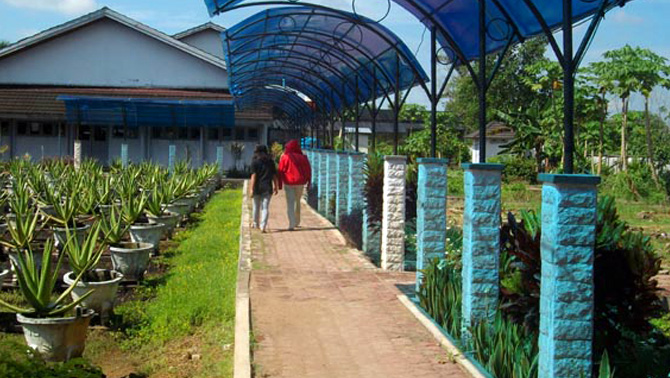


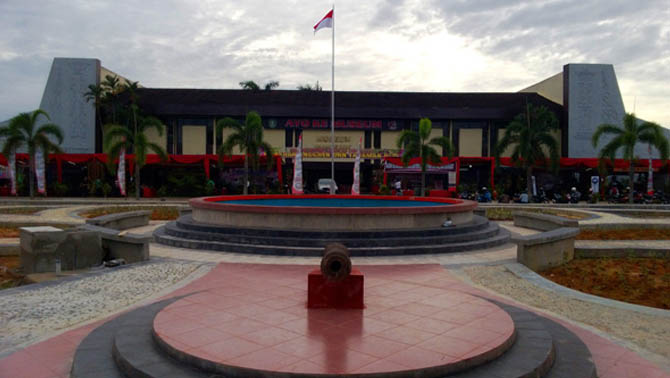
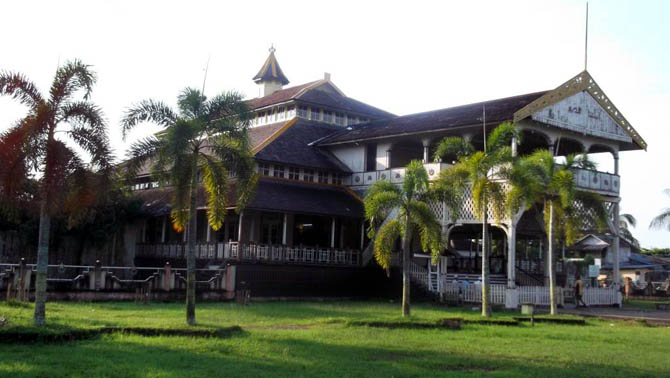

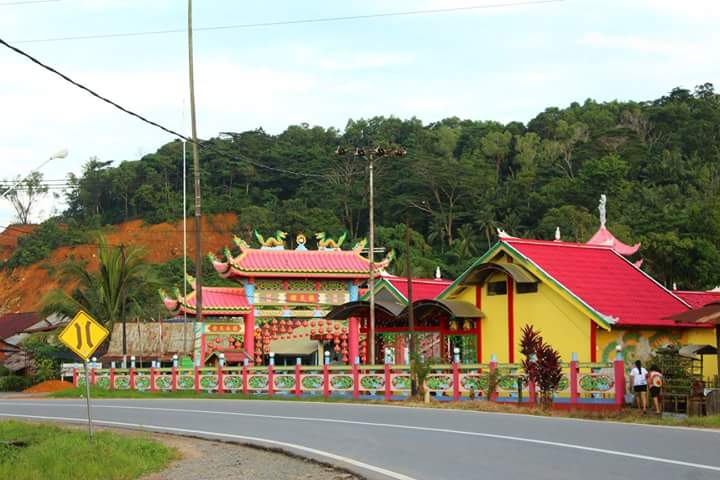
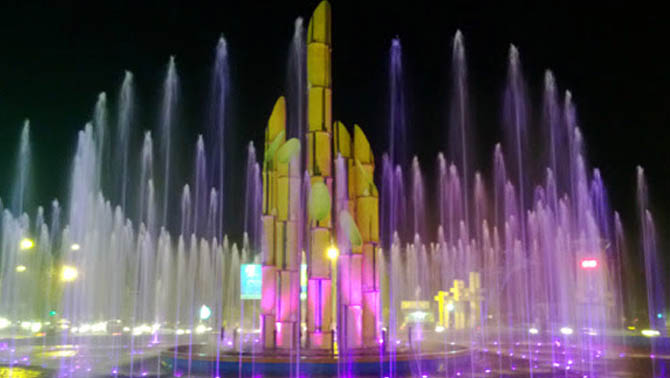
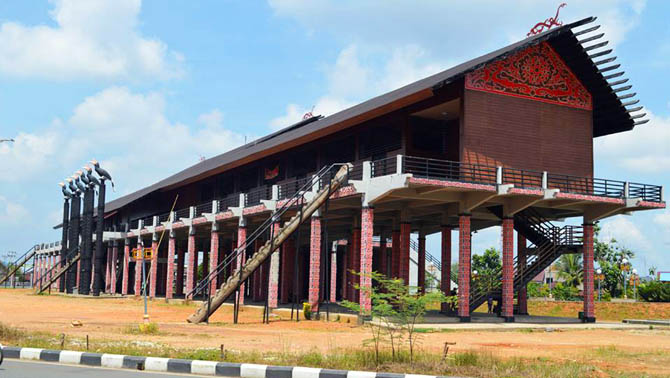
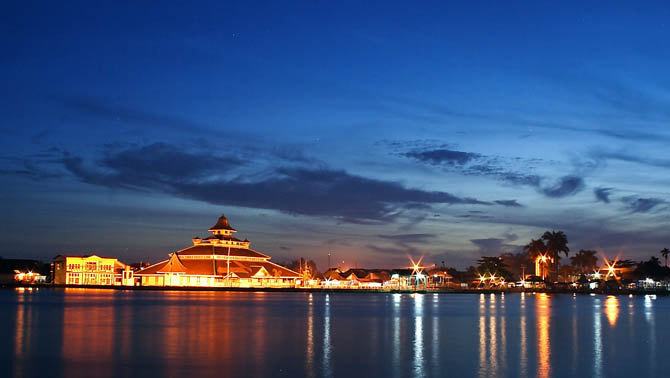

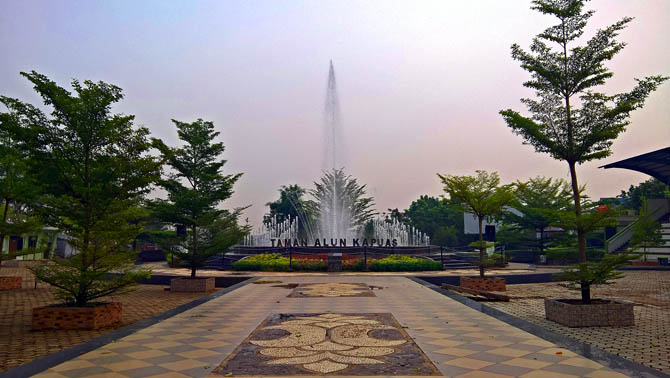
Rekomendasi 16 Tempat Wisata di Pontianak dan Sekitarnya
Melancong ke Kota Pontianak? Rasanya Belum Lengkap tanpa mengunjungi Tempat-tempat wisata menarik ini
Siapa yang tak mengenal Kota
yang berada tepat di tengah planet Bumi ini. Kota Pontianak bukan hanya
melulu tentang khatulistiwa. Tak sedikit tempat wisata di Pontianak yang
mampu menjadi daya pikat tersediri bagi penikmatnya.
Pontianak merupakan Kota yang terletak
di Provinsi Kalimantan Barat ini memang memiliki objek wisata yang
keren. Bukan hanya itu, kota yang satu ini juga dilintasi oleh garis
imajener yang membelah bumi menjadi 2 bagian, yaitu bagian utara dan
selatan. Dan oleh sebab itu pemerintah pun membangun tugu katulistiwa di
Pontianak.
Kota Pontianak juga dikenal dengan
Kapuasnya. Salah satu sungai terpanjang di Indonesia ini memang menjadi
ikon kota yang satu ini. Tapi diluar itu semua, Pontianak sendiri
memiliki objek wisata yang keren dan pantang kamu coret dari buku
liburanmu, seperti:
1. Sinka Island Park
1. Sinka Island Park

Tempat wisata disekitar Pontianak ini
memiliki beragam tempat asyik dan keren, seperti kebun binatang, pantai,
dan pulau yang indah. Untuk kebun binatang sendiri, Sinka Island Park
memiliki sedikitnya 62 spesies binatang, dengan biaya masuk ke kebun
binatang sekitar Rp 10.000,- per orang. Objek wisata yang satu ini
terletak di Kab. Singkawang Kalimantan Barat.
2. Taman Bukit Bougenville

Taman yang satu ini terletak di Desa
Sijangkung, Singkawang. Disini kamu bisa menikmati suasan taman yang
sejuk, hijau, dan indah. Ditambah perpaduan bunga Bougenville yang
keren, liburan kamu disini pun akan sangat menyenangkan. Taman Bukit
Bougenville sendiri memiliki sekitar 46 jenis bunga Bougenville, baik
itu dari dalam maupun luar negeri.
3. Pantai Pasir Panjang

Tempat Wisata keren di dekat Pontianak
ini memiliki daya tarik yang cukup tinggi. Pasalnya, jika dibandingkan
dengan pantai di Kalimantan lainnya, pantai yang satu ini cenderung
lebih terawat dan bersih. Disamping itu, pemandangan di pantai ini pun
sangatlah bagus.
Dengan pasir yang putih, air yang cukup
bersih, dan udara yang segar, pantai ini bisa kamu jadikan sebagai
destinasi alternatif bersama keluarga. Karena selain keren, biaya masuk
pantai yang hanya Rp 10.000,- per orang pun menjadi daya tarik
tersendirii karena murah.
4. Air Terjun Tikalong

Letaknya di Kec. Karangan – kabupaten
Landak. Jika dari Pontianak, kamu hanya membutuhkan sedikitnya 3.5 jam
perjalanan untuk sampai ke objek wisata yang satu ini. Akses menuju air
terjun cantik ini terkesan mudah dan gampang, karena kamu hanya perlu
melalui jalan yang menuju Sui dan Mandor. Setelah sampai di daerah
Mandor, kamu bisa melanjutkan perjalanan sekitar 2 jam, setelah itu
barulah sampai di air terjun ini.
5. Aloe Vera Centre

Tempat wisata di dekat Pontianak ini
memiliki beragam jenis aloe vera atau yang biasa disebut lidah buaya.
Disini, kamu bisa menyaksikan budidaya dan pengolahan lidah buaya
menjadi beberapa produk, baik itu produk kecantikan atau pun produk
makanan.
Tidak hanya itu, di taman yang terletak
di Jalan Budi Utomo Pontianak Utara ini memiliki lidah buaya dengan
ukuran raksasa. Karena tiap pelepah dari tanaman yang satu ini memiliki
berat sekitar 2,1 kg.
6. Bukit Penjamur Bengkayang

Bukit yang bisa ditempuh sekitar 4 jam
perjalanan dari Pontianak ini memiliki pemandangan serupa Gunung Semeru.
Pasalnya, jika kamu kesini, kamu akan menyaksinakan lautan awan yang
cantik dan indah. Hal tersebut terjadi karena letak tempat wisata di
Pontianak ini berada di ketinggian 900 mdpl, jadi sangat mungkin untuk
melihat lautan awan disini.
7. Hutan Kota Untan

Hutan yang satu ini berbeda dengan
kebanyakan hutan di Kalimantan lainnya. Pasalnya, Hutan Untan sendiri
terletak di dalam kota, atau lebih tepatnya di dekat Jalan Jenderal
Ahmad Yani Pontianak.
Disini kamu bisa menyaksikan beragam
tanaman liar dan beberapa jenis anggrek dan kantung semar yang cantik.
Hutan kota Untan sendiri difungsikan sebagai tempat pengembangan
pendidikan, paru-paru kota, dan sebagai tempat rekreasi keluarga.
Wisata Budaya dan Sejarah di Pontianak
8. Museum Negeri Kalbar

Tempat wisata sejarah di Pontianak ini
terletak di Jalan Jenderal Ahmad Yani, Pontianak, Kalimantan Barat.
Disana kamu akan menyaksikan beragam koleksi menarik tentang kebudayaan
dan peradapan di Kota Pontianak dan sekitarnya. Tarif terakhir untuk
masuk ke museum Kalbar sendiri sangatlah murah karena hanya sekitar Rp
1.000,- sampai Rp 3.000,- per orang.
9. Keraton Kesultanan Kadriah

Kesultanan ini terletak di Kampong Dalam
Bugis, Kec. Pontianak Timur, Pontianak. Disana kamu bisa menemui
beragam peninggalan Sultan Syarief Abdurrohman yang masih terjaga hingga
sekarang. Oya, perlu kamu tahu, keraton yang satu ini telah berdiri
sejak tahun 1771 M. Kendati demikian, tempat wisata di Pontianak yang
bersejarah ini masih tetap terjaga dan terawat dengan baik.
10. Tugu Katulistiwa

Tugu Kaltulistiwa sendiri berjarak 3 km
dari pusat kota. Kendati hanya terbuat dari semuah tiang, bangunan, dan
beberapa ornamen lain, namun tugu yang satu ini menjadi kebanggaan warga
Pontianak. Oya, disini juga terdapat toko oleh-oleh yang menjual segala
pernak-pernik tugu ini. Tapi jika kamu ingin mendapatkan sertifikat
atas kunjungan ke Tugu Katulistiwa, kamu harus mengeluarkan biaya
sekitar Rp 10.000,-.
11. Kota Singkawang

Dibandingkan dengan kota-kota yang lain,
Kota Singkawang memiliki keunikan yang khas dan tidak dimiliki oleh
kota lainnya. Pasalnya, di kota ini kamu akan melihat sebuah kota dengan
penduduk Tionghoa yang melimpah.
Bukan Cuma itu, di kota wisata yang bisa
ditempuh dengan waktu sekitar 3 jam dari Pontianak ini, kamu juga akan
melihat bahasa Indonesia, Melayu, dan Bahasa Tionghoa menjadi satu. Hal
tersebut terjadi karena bahasa Tionghoa disini adalah bahasa lumrah
untuk warga Singkwang. Selain itu, disini juga banyak dijumpai pernak
pernik Tionghoa, dari mulai toko, sampai Vihara.
12. Tugu Bambu Runcing

Tugu ini terletak di Jalan Jenderal
Ahmad Yani, Pontianak. Menurut sejarah, tuju ini memang sengaja
dibangung untuk mengenang perjuangan kemerdekaan warga Pontianak.
Disamping itu, tugu yang memiliki 11 buah bambu runcing dengan ujung
yang mengarah ke atas.
13. Rumah Betang

Tempat wisata di Pontianak ini adalah
replika dari rumah adat Dayak di Kalimantan Barat. Bangunan rumah ini
memiliki panjang 138 m, tinggi 7 m, dan lebar 5 m. Rumah panggung ini
dibuat untuk melestarikan bangunan adat khas dayak. Oya, bangunan yang
satu ini terletak di Jalan Sultan Syahrir, Kota Baru, Pontianak.
Wisata Religi di Pontianak
14. Masjid Jami Pontianak

Masjid ini terletak di Kampong Dalam
Bugis, Pontianak Timur, Pontianak. Bangunan masjid ini adalah bagian
dari Keraton kadariyah dan dibangun oleh Sultan Syarief Abdurrohman. Dan
sekarang telah menjadi bagian dari tempat wisata di Pontianak bagi kamu
yang suka berwisata religi. Oya, perlu kamu tahu, masjid ini biasanya
dapat menampung kurang lebih 1.500 jemaah. Dan untuk menghindarkan
masjid ini dari bencana banjir, Sultan Syarief Abdurrohman selaku
pendiri bangunan ini pun membuat konsep rumah panggung.
15. Vihara Bodhisattva Karaniya Metta

Vihara yang satu ini terletak di
Kelurahan Darat Kedip, Kecamatan Pontianak Kota, Kota Pontianak. Vihara
Bodhidatva Karaniya Metta sendiri terkernal sebagai salah satu vihara
tertua, karena dibangun sekitar 1645-1772 M. Oya, jika kamu tempat
wisata Pontianak ini, kamu akan menemukan tempat peribadatan dan
beberapa relief khas vihara yang unik dan cantik.
Tempat Wisata Buatan di Pontianak
16. Taman Alun-Alun Kapuas

Taman yang satu ini adalah terletak di
tepi Sungai Kapuas, Pontianak. Disini kamu bisa menimati keindahan
desain taman yang cantik dan unik. Denga luas 3 hektar dan terletak di
pusat Kota Pontianak, taman yang satu ini menjadi alternatif wisata
untuk warga Pontianak, terutama kaum muda-mudi yang sudah kekinian.
Karena selain murah meriah, taman ini juga mudah dijangkau karena dekat
dengan pusat kota.
Berhubung semua kota-kota yang ada di
Pulau Kalimantan memiliki beberapa perbedaan soal harga. Jadi, jika kamu
berasal dari daerah Jawa, atau luar kalimantan, sebagiknya menyiapkan
budget lebih untuk mengantisipasi harga barang-barang yang sedikit
mahal. Selamat menikmati tempat wisata di Pontianak dan sekitarnya.
Langganan:
Postingan (Atom)




